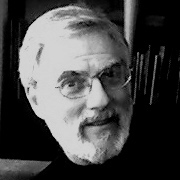Print This Page
|
Click to View All Speakers
|

Thomas Brod
|
Thomas M. Brod, MD, DFAPA is a faculty member of the New Center for Psychoanalysis, Los Angeles, and Associate Clinical Professor of Psychiatry, UCLA. He has chaired the course on Neurofeedback at the American Psychiatric Association annual meetings for the past four years. In late 2005-early 2006 he organized and chaired two conferences for the Museum of Contemporary Art in Los Angeles tied to their exhibition entitited, "Ecstasy: In and About Altered States". In May 2007, he will chair a symposium on psilocybin research at this year's American Psychiatric Association annual meeting.
|
|
Workshop #14): MYSTERIES OF NF SUCCESS: What's Happening When"Nothing's Happening"?
In this two-hour workshop, T. Brod and Wm Scott will review non-linear dynamic theory and its successful application in NeuroCare Pro and the new BrainPaint application of Bill Scott. We will consider the relationship of neurofeedback to subjectivity in cases of patient recovery. Is the process de-humanized when the computer is the Analyst and the patient's "brain” is being trained? Emphasis in the workshop will be on enhancing therapist effectiveness when it appears on the surface that "nothing is happening."
Co-presented by Bill Scott
Plenary #100): NIGHTLIGHT TRAINING: Using Neurofeedback with the Dying
Neurofeedback is a valuable treatment adjunct for patients with catastophic and terminal illness. Within a soothing and contructive environment, neurofeedback is well-suited for dealing with pain and fear. the largest hurdle to it's more wide-spread use is therapist comfort with the dying individual.
Co-presented by Marilyn Stoner "Dr. Marilyn Stoner&
Plenary #99): Non-Linear Dynamic Neurofeedback: Wrangling Information For the Brain-Computer Interchange
We will consider cases of dramatic recovery with NeuroCare Pro and BrainPaint biofeedback to illustrate the general phenomenon of patient recovery when it appears on the surface that "nothing is happening." To go deeper, we will look at the "scientific" creation-myth of brain and self-regulation training.
Details:
Workshop #14): MYSTERIES OF NF SUCCESS: What's Happening When"Nothing's Happening"?
In this two-hour workshop, Thomas Brod and Wm Scott will review non-linear dynamic theory and its successful application in NeuroCare Pro and the new BrainPaint application of Bill Scott. We will consider the relationship of neurofeedback to subjectivity in cases of patient recovery. Is the process de-humanized when the computer is the Analyst and the patient's "brain” is being trained? Thinking in terms of brain-computer interface would seem to remove two "selves" from the self-regulation process--that of the therapist and that of the patient/client—but actually allows a non-materialist generative perspective. Emphasis in the workshop will be on enhancing therapist effectiveness when it appears on the surface that "nothing is happening."
We will address the observations of the “self-regulating brain” which have confounded the standard neurofeedback paradigm of the operant conditioning model applied to specific frequency training. The EEG reflects brain communication which is inherently non-linear. Why expect linear measures, including the quantitative EEG (QEEG), to train “brain waves”—ie, state management.
Detailed consideration will be given to protocol-based feedback vs. Val Brown’s “information value” based feedback.
Additionally, there are elements of EEG biofeedback assessment, protocol selection and post-session reassessment that can be computerized—once they are manualized. The BrainPaint program now has a beta version performing these functions.
Several cases will be reviewed in detail. Brain damage from early childhood and post-stroke patients will illustrate dramatic recovery of chronic dysfunction from non-linear dynamic feedback. Presumably these illustrate the effects of brain plasticity in fully developed people.
Group discussion will be expected in this workshop.
Co-presented by Bill Scott
Plenary #100): NIGHTLIGHT TRAINING: Using Neurofeedback with the Dying
This presentation will consist of 20 minutes of lecture followed by 25 minutes of group discussion. It is the intent of the presenter that the shared experience of audience members be the primary source of information for attendees.
No published professional literature exists on the use of neurofeedback (NF) with the dying. Yet the application is a natural extension of present clinical uses of NF. Foremost in the suffering of terminal patients are pain and anxiety, which the average neurofeedback therapist is well-prepared to treat or train. It is dealing with death and dying that is more likely to present problems for NF therapists who receive calls to assist a patient with catastrophic illness.
Little time will be spent in the presentation on the specifics of neurofeedback itself. We may assume that the NF therapist invited to help in these matters will be competent to handle technical issues and sensitive enough to adapt them as needed to the settings involved.
Instead we will focus on the wide range of tasks such a therapist will face. The primary task is self-knowledge about one’s feelings about death and being with the dying. Inherent therein is the embedded task of desensitization to ones terror—which is an ordinary, expectable, and recurrent professional developmental task. The next task is to increase ones knowledge base, understanding the elements of quality care for patients in the last phase of life. Such understanding is additionally important in the developmental task of desensitization to terror of death.
We will turn to the tasks of the dying from the twin perspectives of educators at the American Medical Association and practitioners of Tibetan Buddhism, noticing well these perspectives overlap.
Finally we will free ourselves to imagine being present at the end of life.
Co-presented by Marilyn Stoner "Dr. Marilyn Stoner&
Plenary #99): Non-Linear Dynamic Neurofeedback: Wrangling Information For the Brain-Computer Interchange
Contact Info:
Thomas Brod M.D.
12304 Santa Monica Blvd #210
Los Angeles, California 90025
phone: 310-207-3337
|
Click to View All Speakers
|
